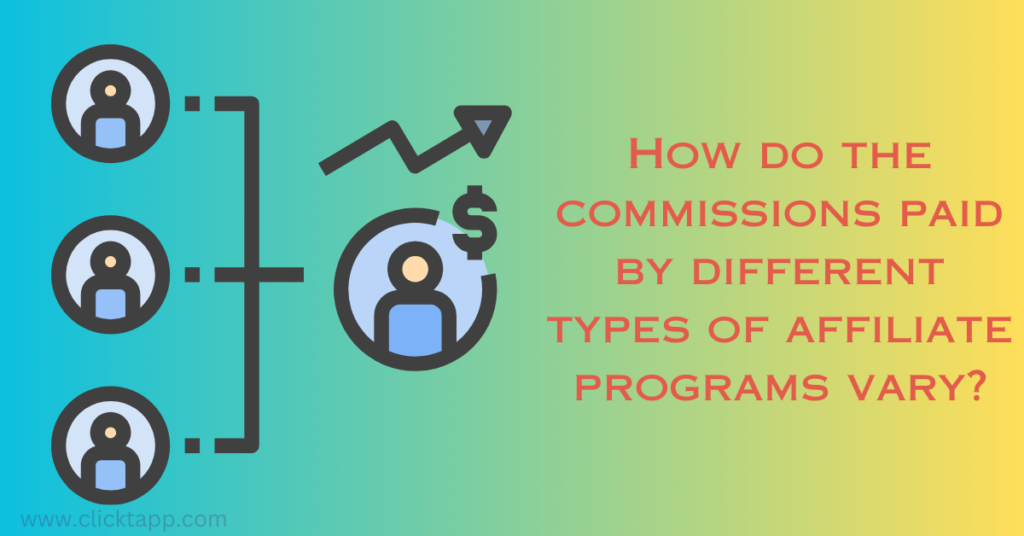Affiliate Marketing Campaigns: The tutorial will be step-by-step
Affiliate marketing is a powerful strategy for earning passive income online by promoting other people’s products and earning a commission for each sale made through your referral. While it can seem daunting at first, a well-structured affiliate marketing campaign can be highly rewarding. This step-by-step tutorial will guide you through the process of creating a successful affiliate marketing campaign, from choosing the right niche to optimizing your strategies for maximum profitability.
1. Understanding Affiliate Marketing

Before diving into the specifics, it’s crucial to understand the fundamentals of affiliate marketing Campaigns. Essentially, affiliate marketing involves three main parties: the merchant (seller), the affiliate (you), and the customer. The affiliate promotes the merchant’s products using unique tracking links, and if a customer makes a purchase through one of these links, the affiliate earns a commission.
Benefits of Affiliate Marketing
- Low startup costs: You don’t need to create your own product or maintain inventory.
- Flexibility: Work from anywhere and choose the products you want to promote.
- Passive income: Earn money even if you’re not actively working.
2. Choosing Your Niche
Selecting the right niche is critical to your success in affiliate marketing. Your niche aligns with your interests and expertise enough demand and profitability potential.

How to Choose a Profitable Niche
- Passion and Knowledge: Choose a niche you are passionate about and knowledgeable in. This will help you create authentic content.
- Market Demand: Use tools like Google Trends and Keyword Planner to assess the demand for your niche.
- Competition: Evaluate the competition. A highly competitive niche can be challenging for beginners, it indicates profitability.
- Monetization Potential: Ensure there are affiliate programs with high-paying commissions in your chosen niche.
3. Finding Affiliate Programs
Once you have selected your niche, the next step is to find suitable affiliate programs. There are two main types of affiliate programs: individual merchant programs and affiliate networks.
Types of Affiliate Programs

- Individual Merchant Programs: These are direct partnerships with companies that offer affiliate opportunities. Examples include Amazon Associates, eBay Partner Network, and Shopify Affiliate Program.
- Affiliate Networks: These are platforms that connect affiliates with multiple merchants. Examples include ClickBank, ShareASale, and Commission Junction (CJ).
Evaluating Affiliate Programs
- Commission Rates: Higher commissions can significantly increase your earnings.
- Cookie Duration: Longer cookie durations give you a better chance of earning a commission.
- Reputation: Choose programs with good reputations to ensure timely payments and quality support.
- Product Relevance: The products should be relevant to your niche and audience.
4. Building Your Platform
Your platform is where you will promote affiliate products. This could be a blog, YouTube channel, social media profile, or email list. Each platform has its strengths, so choose one that aligns with your skills and audience.
Creating a Blog

- Domain and Hosting: Choose a memorable domain name and reliable hosting service.
- Content Management System (CMS): WordPress is a popular choice due to its flexibility and ease of use.
- Design and Layout: Use a clean and professional design. Ensure your site is mobile-friendly and easy to navigate.
- Content Strategy: Plan a content strategy that includes informative and engaging blog posts, product reviews, and tutorials.
Leveraging Social Media
- Profile Setup: Create professional profiles on platforms like Instagram, Facebook, Twitter, and LinkedIn.
- Content Creation: Share valuable content regularly, including posts, stories, videos, and live sessions.
- Engagement: Interact with your audience through comments, messages, and polls to build a loyal community.
5. Creating Quality Content
Quality content is the cornerstone of a successful affiliate marketing campaign. Your content should provide value to your audience and encourage them to take action.

Types of Content
- Product Reviews: Write detailed and honest reviews of the products you are promoting.
- How-To Guides: Create step-by-step guides that show how to use the products.
- Comparison Posts: Compare different products within your niche to help your audience make informed decisions.
- Listicles: Curate lists of top products in your niche.
- Videos: Use YouTube or other video platforms to create engaging product reviews, unboxings, and tutorials.
Content Creation Tips
- Be Authentic: Build trust by being honest and transparent with your audience.
- Use Visuals: High-quality images, infographics, and videos can make your content more engaging.
- SEO Optimization: Use relevant keywords, meta descriptions, and internal linking to improve your search engine rankings.
- Call to Action (CTA): Encourage your readers to click on your affiliate links with clear and compelling CTAs.
6. Driving Traffic to Your Platform
Once your content is live, the next step is to drive traffic to your platform. More traffic translates to more potential sales and commissions.

SEO (Search Engine Optimization)
- Keyword Research: Use tools like Ahrefs, SEMrush, or Google Keyword Planner to find relevant keywords.
- On-Page SEO: Optimize your content with proper headings, keyword usage, and meta tags.
- Off-Page SEO: Build backlinks from reputable websites to improve your site’s authority.
Social Media Marketing
- Regular Posting: Maintain a consistent posting schedule.
- Engage with Followers: Respond to comments and messages to build a loyal following.
- Paid Advertising: Use targeted ads on platforms like Facebook and Instagram to reach a wider audience.
Email Marketing
- Build an Email List: Use lead magnets like free eBooks or newsletters to collect email addresses.
- Create Engaging Emails: Send regular newsletters with valuable content and product recommendations.
- Segment Your Audience: Tailor your emails based on your subscribers’ interests and behavior.
Paid Advertising
- PPC Campaigns: Use pay-per-click (PPC) advertising on Google Ads or Bing Ads to drive targeted traffic.
- Social Media Ads: Run ads on social media platforms to reach a specific demographic.
- Retargeting: Use retargeting ads to re-engage visitors who have previously interacted with your content.
7. Tracking and Analyzing Performance

Tracking your performance is crucial to understand what works and what doesn’t. Use analytics tools to monitor your affiliate marketing Campaigns and make data-driven decisions.
Tools for Tracking
- Google Analytics: Track your website traffic, user behavior, and conversion rates.
- Affiliate Network Reports: Use the reporting tools provided by your affiliate networks to monitor clicks, sales, and commissions.
- Heatmaps: Tools like Hotjar or Crazy Egg can help you understand how visitors interact with your site.
Key Metrics to Monitor
- Traffic Sources: Understand where your traffic is coming from (organic, social, email, paid).
- Click-Through Rate (CTR): Measure the percentage of visitors who click on your affiliate links.
- Conversion Rate: Track the percentage of visitors who make a purchase through your affiliate links.
- Revenue: Monitor your earnings to assess the profitability of your campaigns.
8. Optimizing and Scaling Your Campaigns
Optimization is an ongoing process that involves tweaking and improving your strategies based on your performance data.
A/B Testing
- Headlines and CTAs: Test different headlines and CTAs to see which ones perform better.
- Content Layout: Experiment with different content layouts and formats.
- Traffic Sources: Test various traffic sources to find the most effective ones.
Scaling Strategies
- Increase Content Production: Publish more high-quality content to attract a larger audience.
- Expand to New Platforms: Reach new audiences by expanding to additional social media platforms or starting a podcast.
- Collaborate with Influencers: Partner with influencers in your niche to leverage their audience.
Conclusion
Creating a successful affiliate marketing campaigns involves careful planning, consistent effort, and ongoing optimization. By choosing the right niche, finding suitable affiliate programs, building a robust platform, creating valuable content, driving traffic, and continuously analyzing and optimizing your strategies, you can build a profitable affiliate marketing business. Remember, success in affiliate marketing doesn’t happen overnight. Stay patient, and persistent, and always strive to provide value to your audience.
FAQs
1. What is the best platform for affiliate marketing?
There isn’t a one-size-fits-all answer, as the best platform depends on your niche and audience. Blogs, YouTube channels, and social media profiles are popular choices.
2. How much money can I make with affiliate marketing?
Earnings vary widely depending on your niche, traffic, and marketing strategies. Some affiliates make a few hundred dollars a month, others earn six-figure incomes.
3. Do I need a website for affiliate marketing?
Having a website is beneficial, it’s not mandatory. You can use social media, email marketing, or YouTube to promote affiliate products.
4. How long does it take to see results from affiliate marketing?
It can take several months to start seeing significant results. Success depends on factors like niche selection, content quality, and marketing efforts.
5. Are there any costs associated with affiliate marketing?
Yes, there can be costs for domain and hosting (if you choose to start a blog), marketing tools, and paid advertising. However, the startup costs are generally lower compared to other online businesses.



Pingback: Marketing and Advertising Strategies: A Comprehensive Guide - Clicktapp